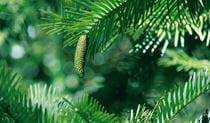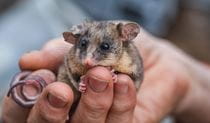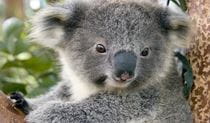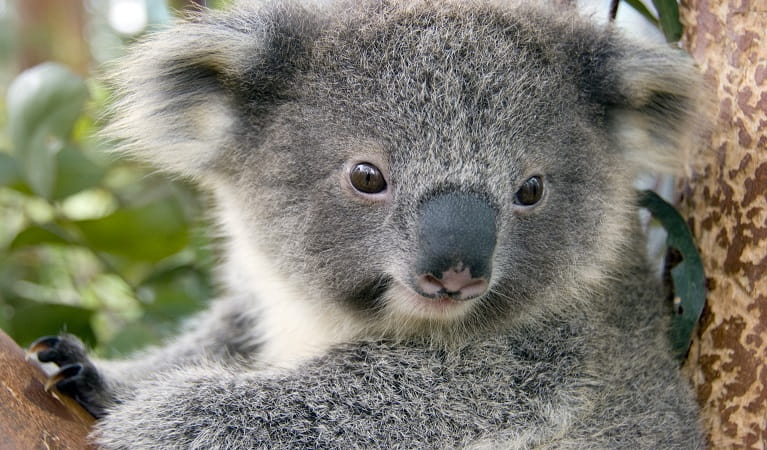Koala
One of the most renowned Australian animals, the tree-dwelling marsupial koala can be found in gum tree forests and woodlands across eastern NSW, Victoria and Queensland, as well as in isolated regions in South Australia. With a vice-like grip, this perhaps most iconic but endangered Australian animal lives in tall eucalypts within a home range of several hectares.
Read more about Koala
This stocky marsupial has distinctive furry ears, a large flat black nose and no tail. The koala has opposable digits on both its front and hind feet and sharp claws which give it a vice-like grip - ideal for climbing gum trees.
Generally solitary, you’re most likely to see one of these endangered Australian animals sleeping high in the branches during the day. In the breeding season in late spring, you might hear the male koala bellow, grunt and belch as he establishes his dominance over a home territory that can span several hectares.
Animal facts
- Common name
- Koala
- Scientific name
- Phascolarctos cinereus
- Conservation status in NSW
- Endangered
You might also like
-

Koala conservation project
Koalas are one of Australia's most iconic animals, recognisable around the world. However, koala populations are under increasing pressure and have de...
-

Assets of Intergenerational Significance (AIS)
Assets of Intergenerational Significance (AIS) are declared to bolster protections for an area with exceptional environmental or cultural values, like...
-

Protecting threatened species in parks
Around 84% of the approximately 900 threatened species in NSW are found in our national parks and reserves. Find out what we're doing to protect threa...
-

Saving our Species conservation program
Today, we're at risk of losing nearly 1000 of our state's native animals and plants. That's why the NSW Government established Saving our Species. It'...
Parks in which this animal is found
- Arakwal National Park
- Bangadilly National Park
- Bindarri State Conservation Area
- Bongil Bongil National Park
- Border Ranges National Park
- Brisbane Water National Park
- Bundjalung National Park
- Cottan-Bimbang National Park
- Gardens of Stone State Conservation Area
- Guula Ngurra National Park
- Heathcote National Park
- Lower Grose Valley area in Blue Mountains National Park
- Mount Jerusalem National Park
- Murray Valley Regional Park
- Murrumbidgee Valley National Park
- Nymboi-Binderay National Park
- Richmond Range National Park
- Sea Acres National Park
- South East Forest National Park
- Tomaree National Park
- Ulidarra National Park
- Whian Whian State Conservation Area



